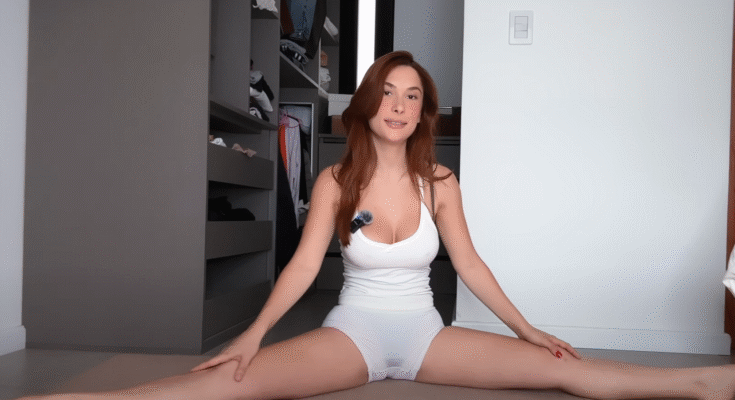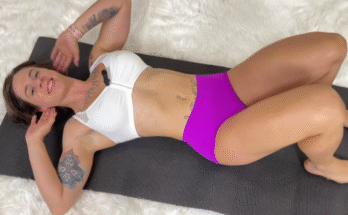In today’s fast-paced world, many people find it difficult to unwind and get a good night’s sleep. Between endless to-do lists, screen time, and daily stressors, our minds often stay active long after we’ve turned off the lights. That’s where relaxing bedtime yoga comes in. It’s a gentle, calming practice that helps the body and mind transition from the busy energy of the day to the restful quiet of the night.
Yoga before bed is more than just a trend—it’s a powerful tool that encourages better sleep, deeper relaxation, and overall well-being. Unlike vigorous workouts, bedtime yoga focuses on slow movements, deep breathing, and mindful awareness, which all work together to activate the body’s parasympathetic nervous system, the part responsible for rest and digestion.

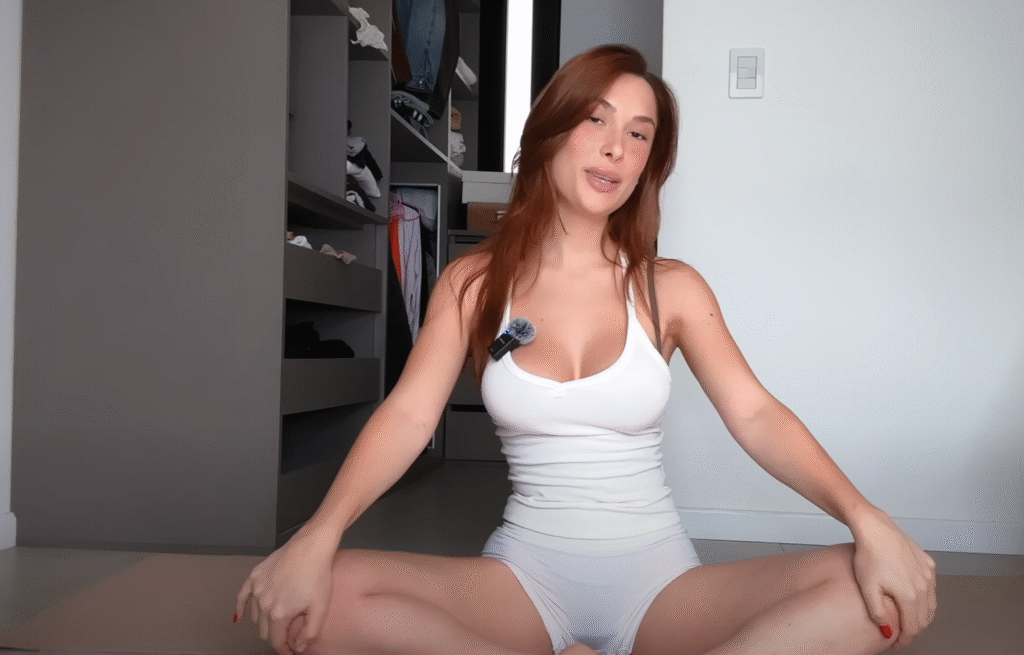
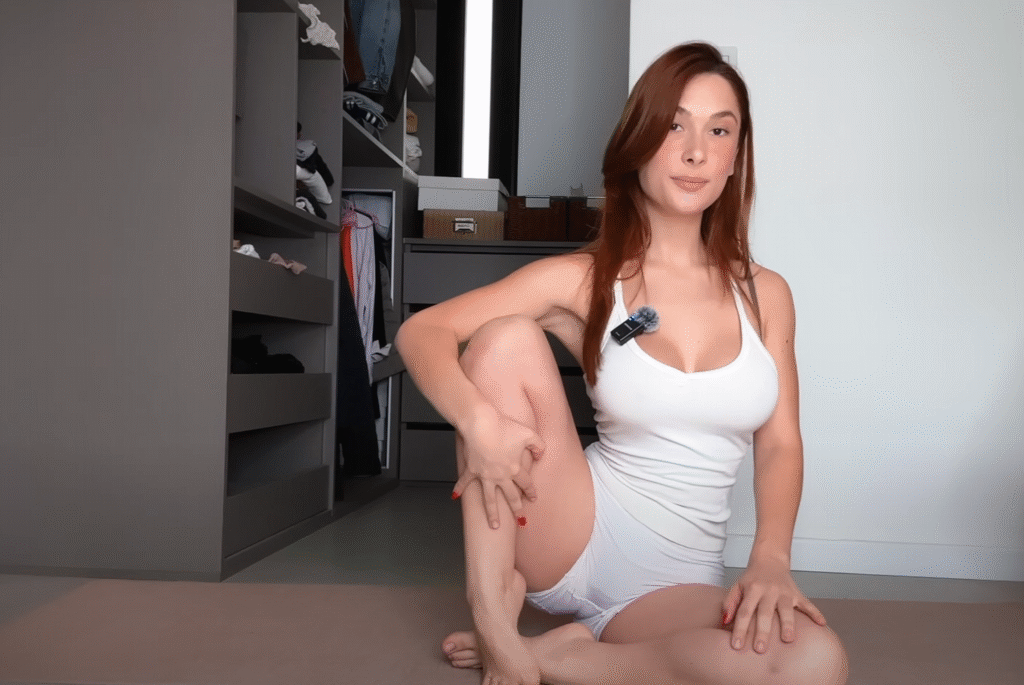
Why Practice Yoga Before Bed?
There are several benefits to practicing yoga at night:
- Improves Sleep Quality: Relaxing stretches and breathing exercises help reduce insomnia and promote deeper sleep. Studies have shown that gentle yoga can help you fall asleep faster and stay asleep longer.
- Reduces Stress and Anxiety: Evening yoga helps lower cortisol levels (the stress hormone), easing the mental tension that builds up throughout the day.
- Relieves Physical Tension: Many people carry tension in their back, neck, shoulders, and hips. Gentle stretching before bed can loosen tight muscles and improve flexibility over time.
- Enhances Mindfulness: Yoga encourages presence and awareness, helping quiet the mind from racing thoughts and worries.
- Establishes a Calming Night Routine: Doing the same relaxing practice each night signals the body that it’s time to wind down, creating a healthy habit for better sleep hygiene.
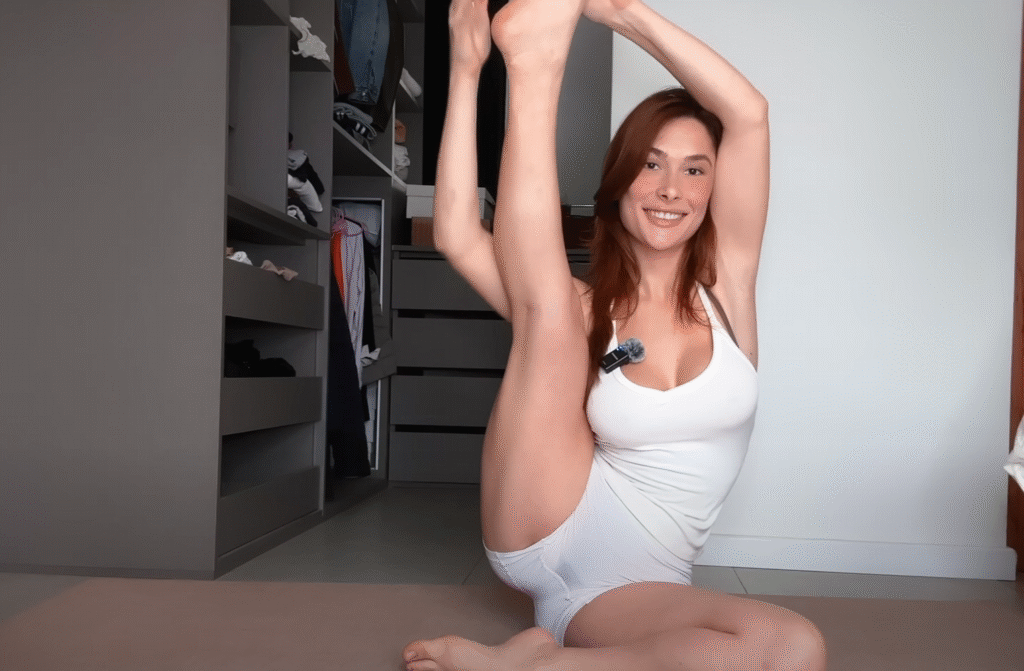

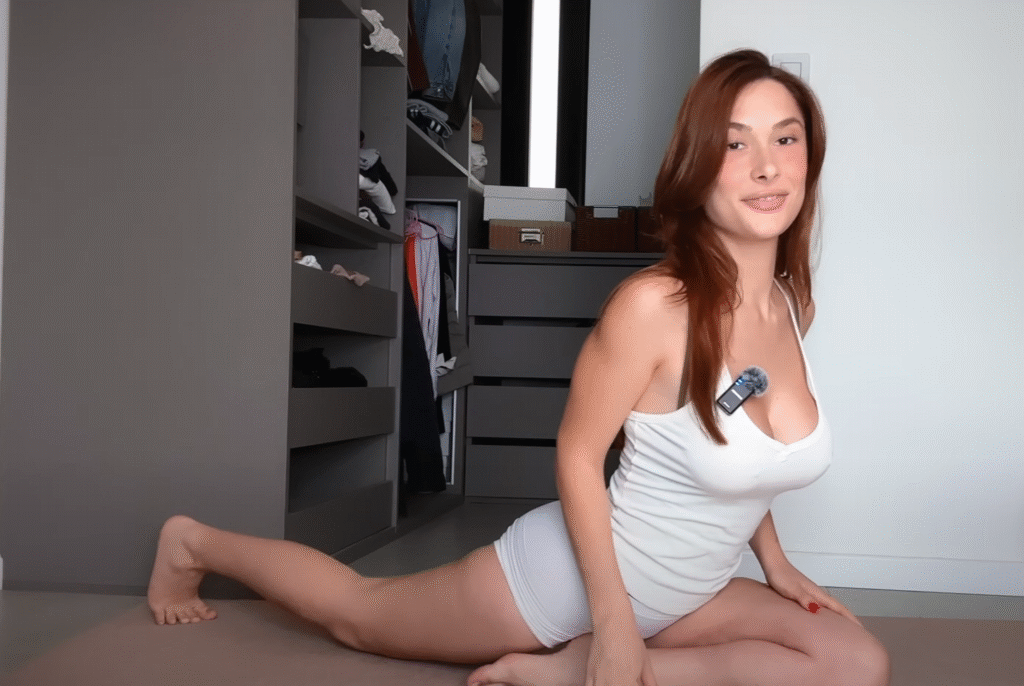
Tips for a Relaxing Bedtime Yoga Practice
Before diving into a routine, here are some simple tips to make your bedtime yoga more enjoyable:
- Create a peaceful environment: Dim the lights, play soft music, or light a candle. Make your space feel calm and cozy.
- Use props: Don’t hesitate to use pillows, bolsters, or blankets to support your body and deepen relaxation.
- Dress comfortably: Wear loose, soft clothes that let your body move and breathe easily.
- Move slowly: There’s no need to rush. Let each movement flow gently and mindfully.
- Breathe deeply: Focus on your breath, letting it become slow and steady. Inhale through the nose and exhale through the mouth or nose, whichever feels more soothing.

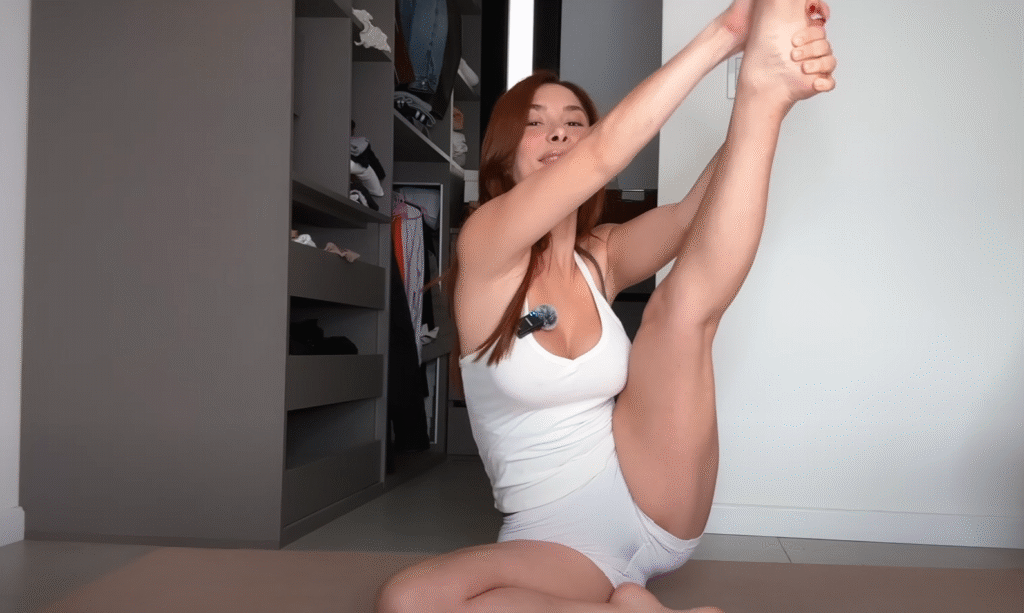
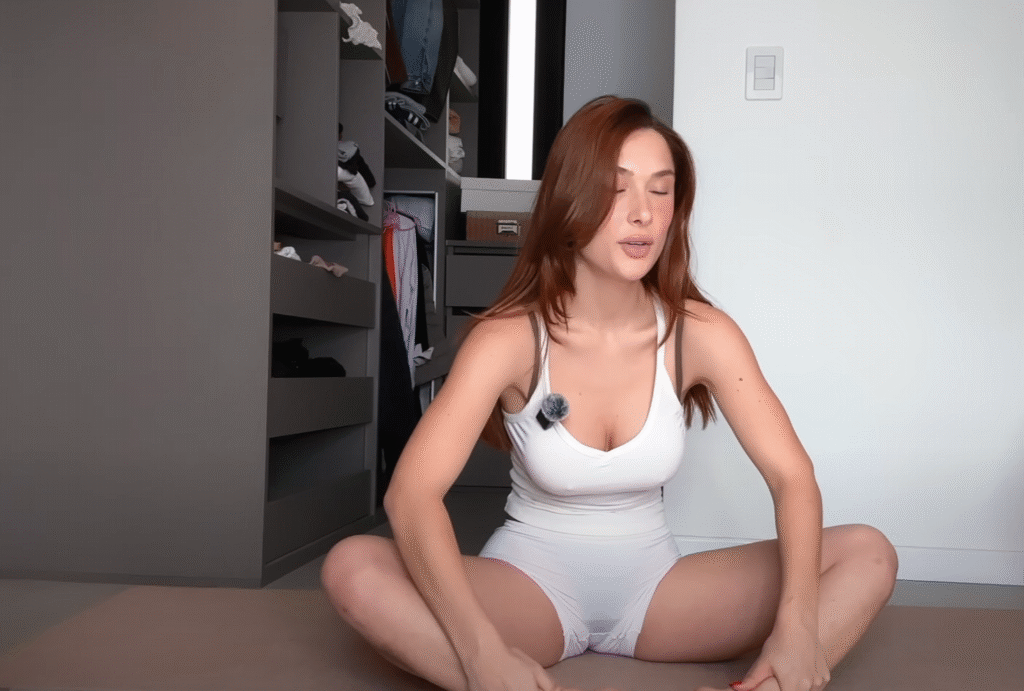
A Simple Bedtime Yoga Routine (15–20 minutes)
This sequence is designed for all levels, including beginners. Move slowly through each pose, holding for about 1–3 minutes depending on your comfort level.
1. Seated Forward Fold (Paschimottanasana)
Sit on your bed or mat with legs extended in front. Inhale to lengthen the spine, and exhale as you gently fold forward, reaching for your feet or shins. Let your head and neck relax.
Benefits: Stretches the hamstrings, calms the nervous system, and helps release mental stress.
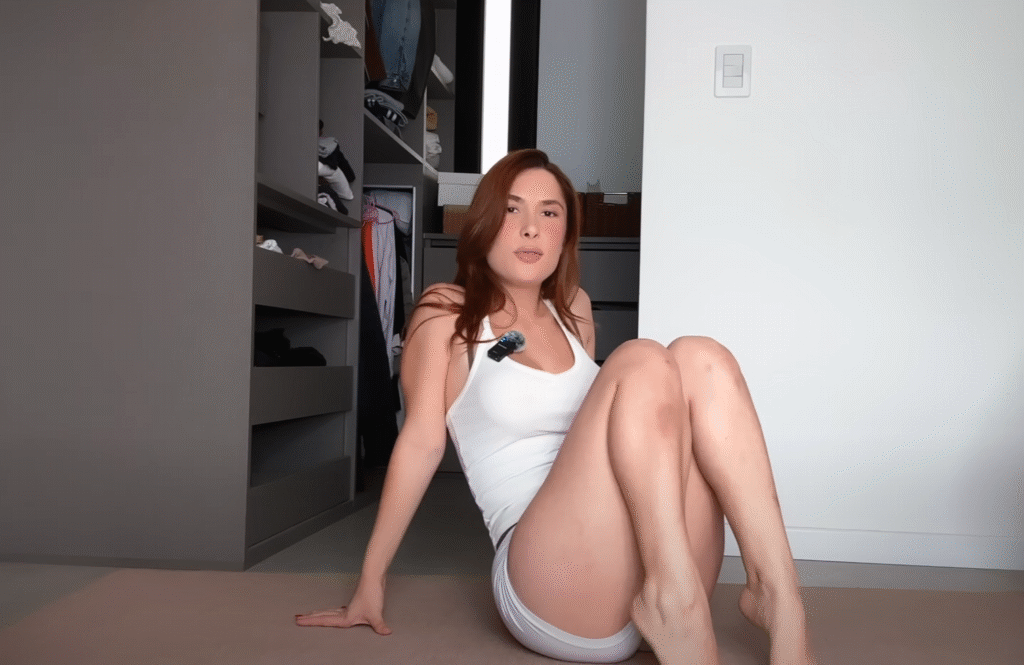
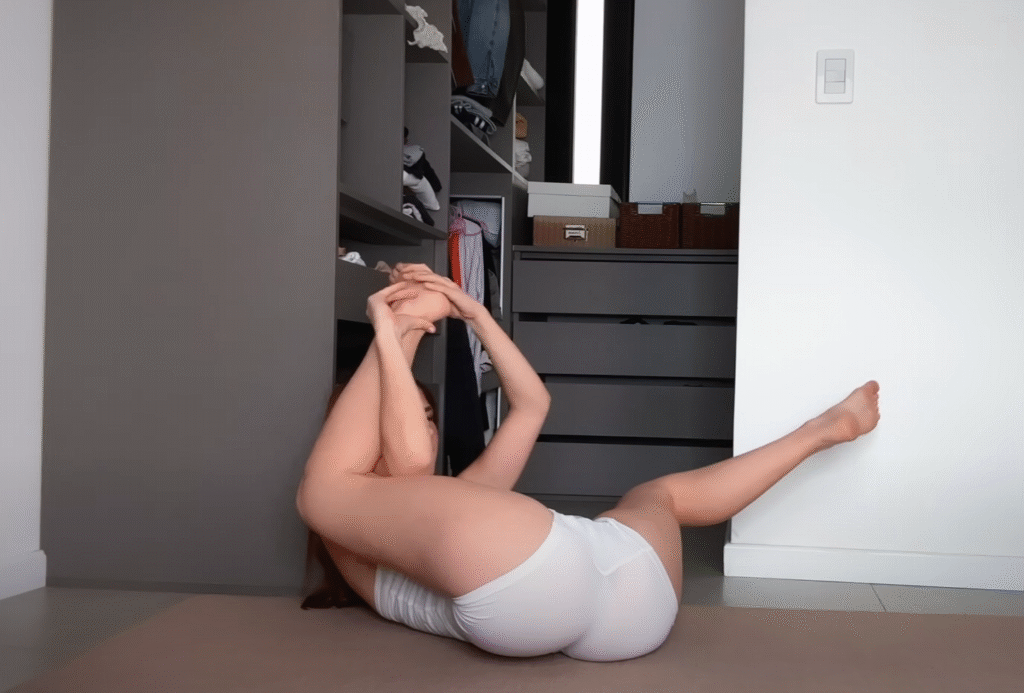

2. Cat-Cow Stretch (Marjaryasana-Bitilasana)
Come to all fours. Inhale and arch your back, lifting your chest and tailbone (Cow). Exhale and round your spine, tucking the chin and pelvis (Cat). Move with your breath.
Benefits: Relieves spine tension and brings mobility to the back.
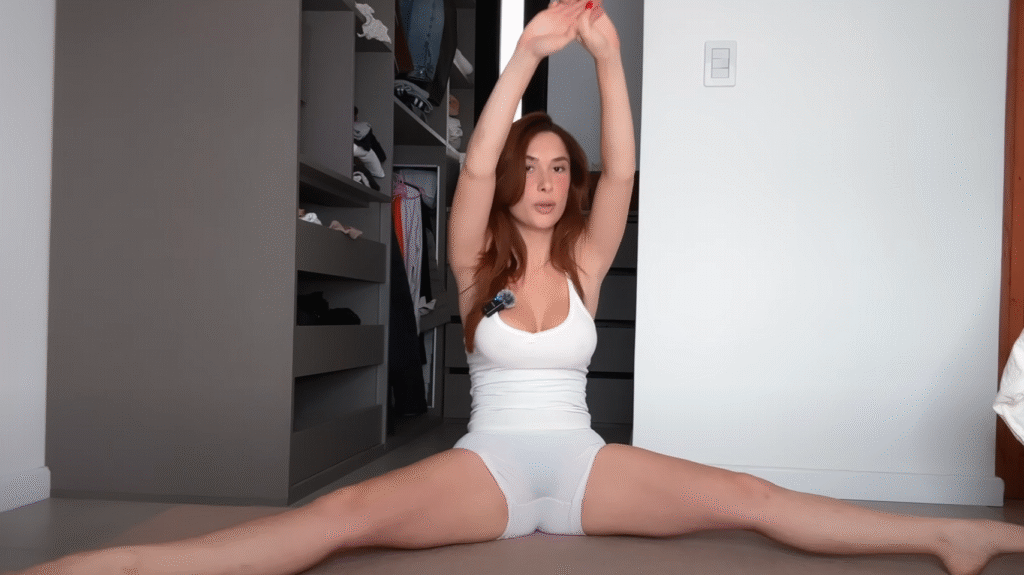


3. Child’s Pose (Balasana)
From all fours, bring your knees wide and sit back onto your heels. Rest your forehead on the mat or a pillow, and stretch your arms forward or place them by your sides.
Benefits: Calms the mind, eases anxiety, and gently stretches the lower back and hips.
4. Supine Twist (Supta Matsyendrasana)
Lie on your back, bring one knee to your chest, and gently guide it across your body while keeping the opposite shoulder grounded. Repeat on the other side.
Benefits: Massages the internal organs, aids digestion, and releases spinal tension.
5. Legs-Up-the-Wall Pose (Viparita Karani)
Lie on your back with your legs extended up against a wall or propped on a pillow or headboard. Let your arms rest by your sides.
Benefits: Reduces fatigue, soothes the nervous system, and improves circulation.
6. Reclining Bound Angle Pose (Supta Baddha Konasana)
Lie on your back, bring the soles of your feet together, and let your knees fall out to the sides. Place pillows under the knees for support if needed.
Benefits: Opens the hips, calms the mind, and promotes deep relaxation.
7. Savasana (Corpse Pose)
Lie flat on your back with arms and legs relaxed, palms facing up. Let your whole body melt into the bed or mat. Close your eyes and focus on your breath.
Stay here for 5–10 minutes.
Benefits: Deeply restores the body and mind, prepares you for sleep.
Breathing and Mindfulness to End the Practice
End your yoga session with simple breathwork or a short meditation:
Simple Breathing Technique: 4-7-8 Breath
- Inhale through the nose for 4 counts
- Hold the breath for 7 counts
- Exhale slowly through the mouth for 8 counts
- Repeat 3–5 times
This breath pattern helps lower the heart rate and prepares the body for rest.
Optional Guided Relaxation: Body Scan
Bring awareness to each part of your body starting from your toes to the crown of your head. As you mentally scan your body, invite each part to relax. This mindfulness technique helps release lingering tension and quiet the mind.
Final Thoughts
Relaxing bedtime yoga is a gentle, nurturing way to end your day. Whether you practice for five minutes or twenty, the important thing is to do it with intention and presence. With regular practice, you’ll likely find yourself sleeping better, feeling calmer, and waking up more refreshed.
Everyone’s bedtime routine is different, so feel free to adjust the sequence, add soothing music, or combine it with journaling or herbal tea. The beauty of yoga is that it meets you where you are—no judgment, no pressure.
So tonight, roll out your mat or settle into your bed, breathe deeply, and let yoga guide you into a night of deep, peaceful sleep.
